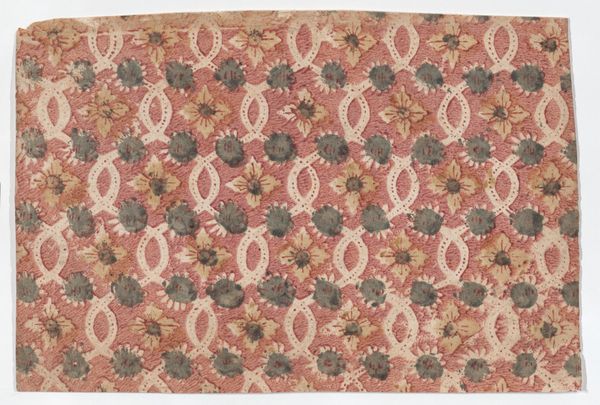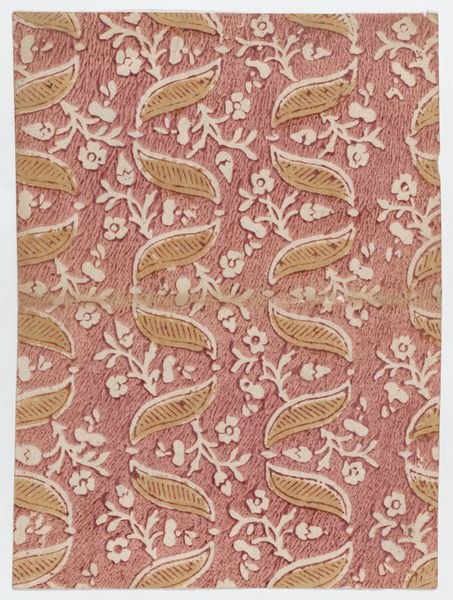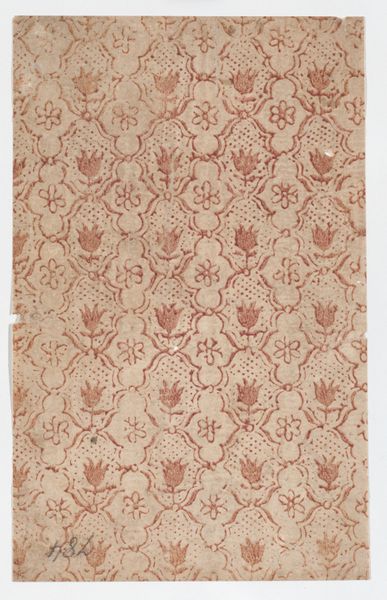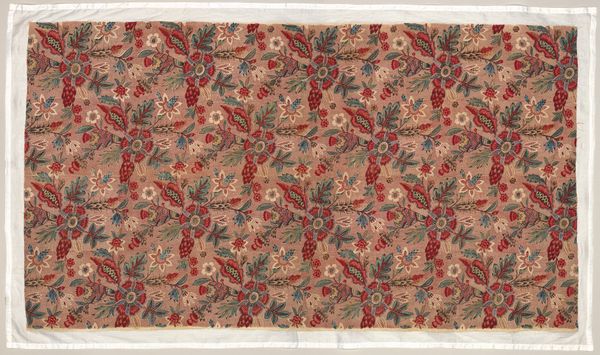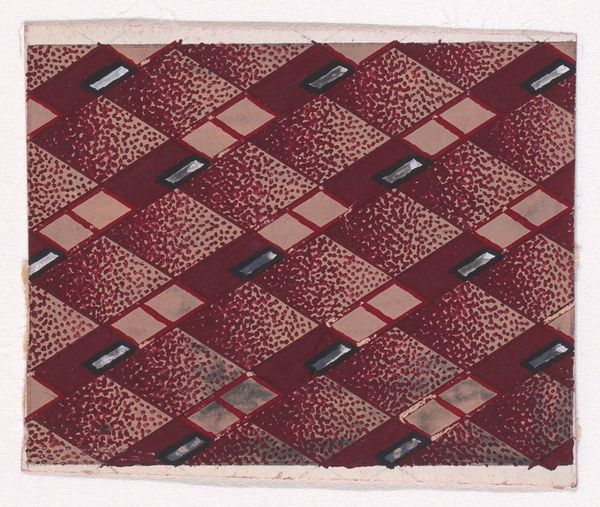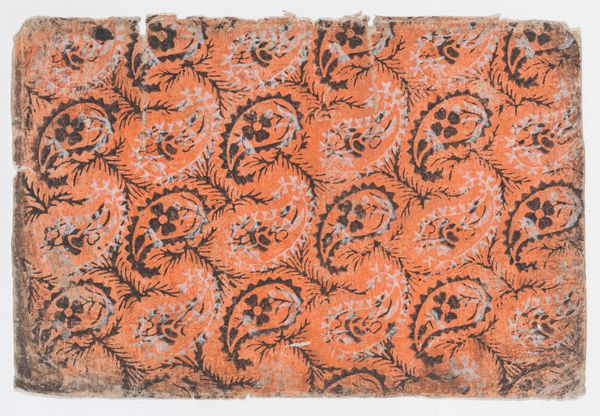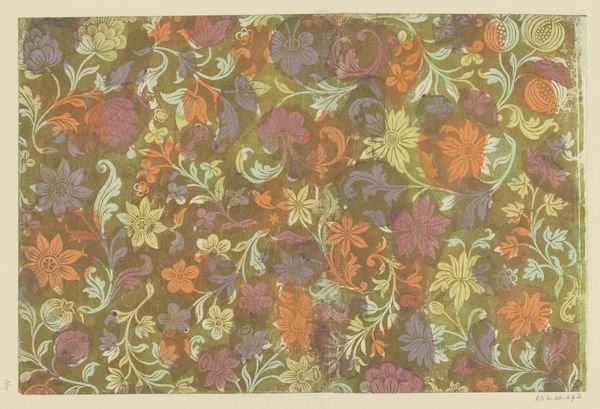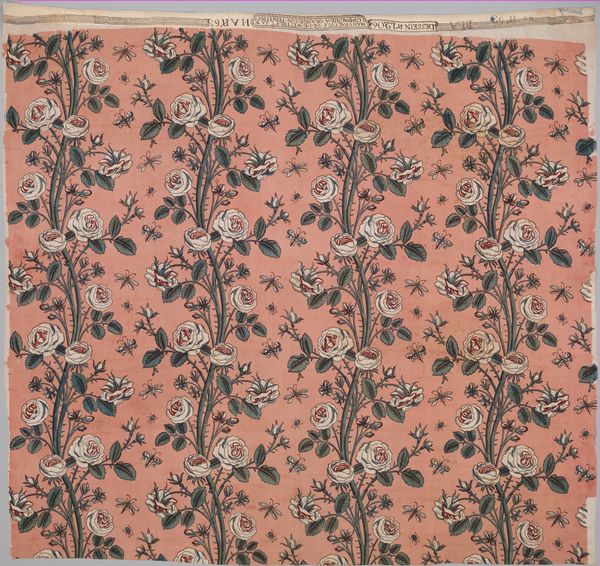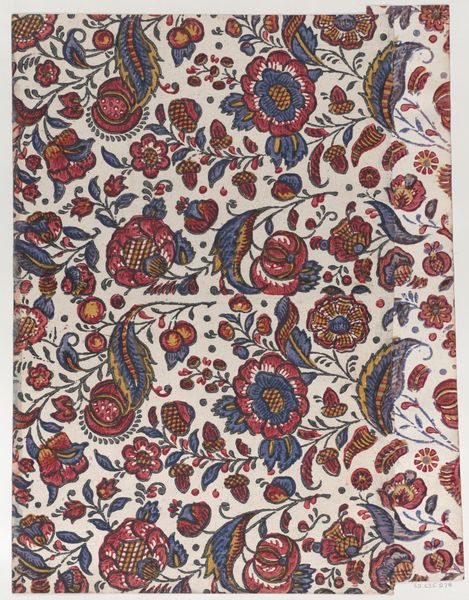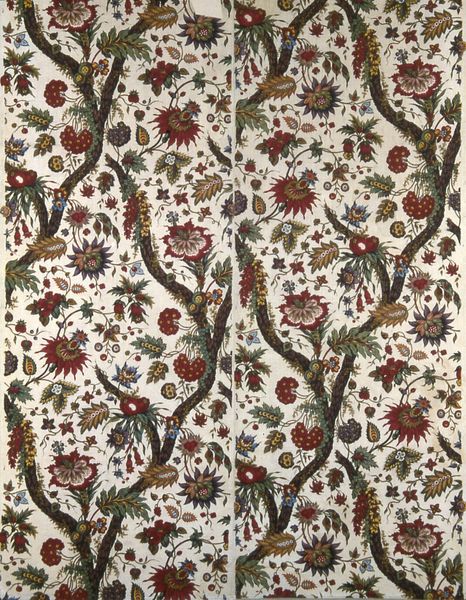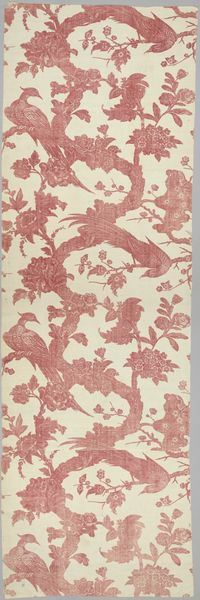
Red book cover with black and white floral pattern 1800 - 1900
0:00
0:00
drawing, print, textile
#
drawing
# print
#
pattern
#
textile
#
organic pattern
#
romanticism
#
flower pattern
#
pattern repetition
#
decorative-art
#
imprinted textile
Dimensions: Sheet: 11 7/16 × 16 15/16 in. (29 × 43 cm)
Copyright: Public Domain
Curator: What we have here is a captivating textile from between 1800 and 1900, currently residing at the Metropolitan Museum of Art. It's entitled "Red book cover with black and white floral pattern" and is attributed to an anonymous artist. Editor: Intriguing. It strikes me as quite bold for a book cover, almost jarring. The floral patterns are rather dense and the stark contrast grabs your attention immediately. Curator: Indeed. This wasn't simply about protecting a book. Think about the conditions of textile production then – the labour involved, the potential for status display, the way such an object connected someone to global trade networks of dyes and printing processes. Editor: From a purely formal perspective, the repetition and alteration of the flower motif certainly guide the eye. The interplay of dark and light, creating an almost hypnotic rhythm across the surface is sophisticated for functional art. The darks, particularly, articulate this really appealing tension against the softer shades. Curator: Right, this tension. Let’s not overlook how the materials impacted the experience. The textile itself speaks of utility, and contrasts starkly with say, expensive leather bookbindings of the same era which are the subject of focused expert craft. But I feel that the imprinted textiles – that almost brings them level – particularly to contemporary eyes. Editor: Precisely. Thinking about these forms, and returning to that earlier word: bold – this combination creates visual interest and elevates the otherwise repetitive pattern. The subtle imperfections, telltale signs of its creation, feel like intentional parts of the visual language and allow it to resonate as part of that decorative art sphere. Curator: What’s so fantastic is how it bridges seemingly disparate worlds of romanticism, pattern design and textile production. It offers a peek into an anonymous artistic journey and what making it meant. It highlights how integral textiles were and are to the globalized cultural-economy as part of visual cultures Editor: Absolutely, and when it’s removed from the setting of a book, the focus becomes about line, form and contrast: really revealing how integral that romantic language is in establishing impact. I’m seeing this less as a book cover now, and as a visual poem about the cultural moment which forged its language and impact.
Comments
No comments
Be the first to comment and join the conversation on the ultimate creative platform.
